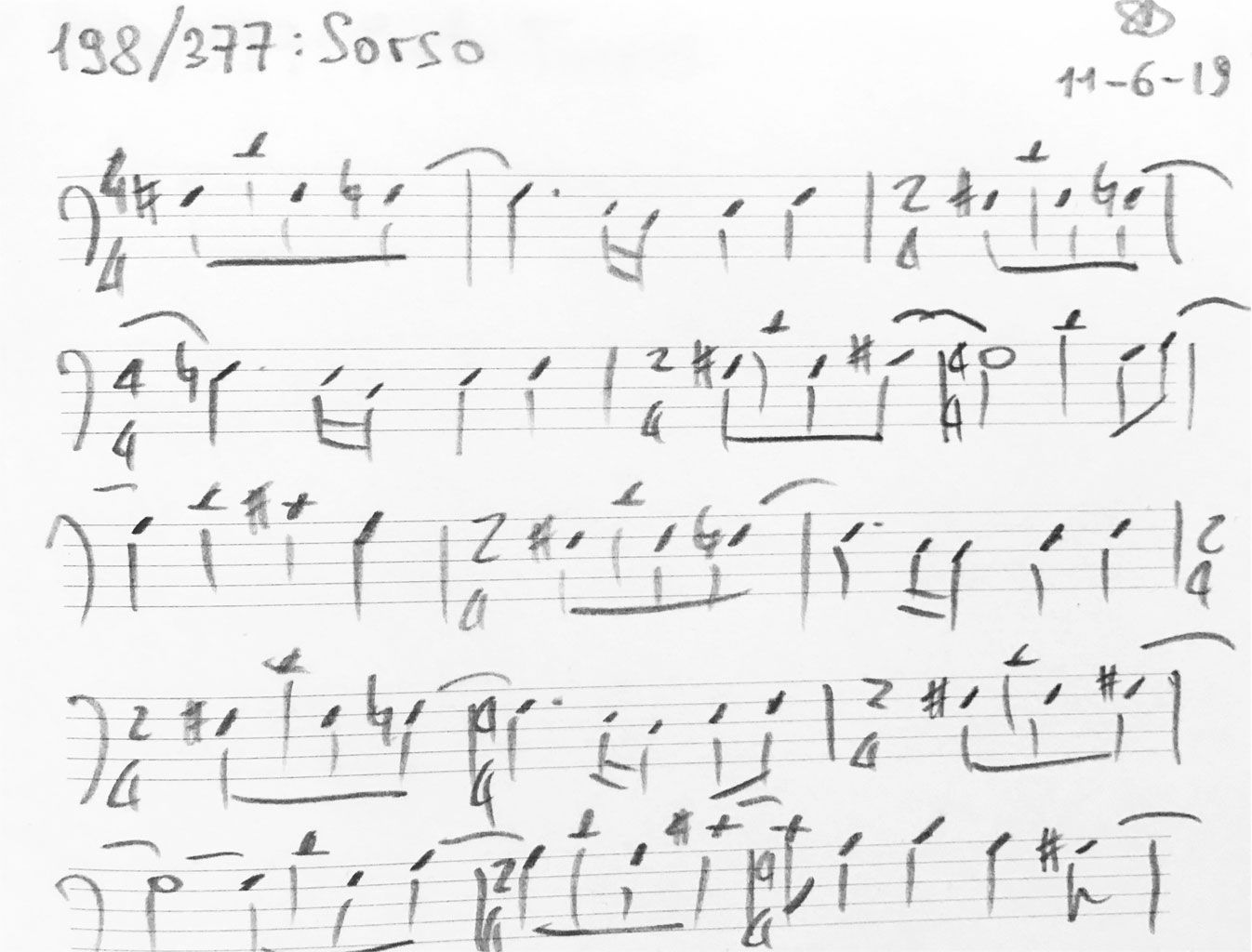
198/377: Sorso
INSPIRATION

Cycling from Sennori to Sorso would have been too easy, not even a kilometer downhill. So I placed Sassari in between. I leave the town in the early afternoon along a stretch of the dreaded ‘Buddi Buddi’, the provincial road 60, and then divert and arrive in Sorso, where Gavino, Angelo’s father, a jazz pianist who lived a month in my flat in Birmingham during his Erasmus, hosts me as he did two days ago in Sennori.
After settling in Gavino’s house, I take the bike back to the Marina di Sorso, going along a nice straight downhill and on a cycle path. I arrive on the coast, where there are quite a few people on the beach, and I cycle along a stretch of waterfront. Visibility is not the best but you can see the island of Asinara, one of my next destinations. After spending some time in a bar, working and eating an ice cream, I get back on my bike and go back to the village.

I stop for a moment at the entrance of the Sorso Sennori winery, established in 1955, which produces a series of excellent wines from this area called Romangia, whose soils are suitable for cultivating the vine due to their sandy and clayey qualities, and well exposed in the sun and in the wind.

Once back in the village I take a tour of the most interesting things to visit. I start from the Piazza del Municipio, in the historic centre, called the Bicocca district, of medieval layout, and immediately ran into a beautiful seventeenth-century building, the Palazzo Baronale. From here I pass through narrow streets with many houses in limestone (what is called ‘tufo’) and I head towards the outskirts of the town, passing several churches, the Blessed Virgin of Itria, Sant’Anna, the parish church of San Pantaleo, from the 19th century, and then the sanctuary of the Madonna di Noli Me Tollere.

I arrive at the famous Fountain of Billellera, unfortunately closed, which I can only see from above, just like I did for its similar Rosello fountain in Sassari. Legend has it that drinking its waters makes one foolish, even though I have already heard this story in almost every village, which says this for the waters of their neighbours.

I return to Gavino’s house, who, after preparing dinner for me, takes me to his studio upstairs. Gavino Piana is a painter, and I am amazed by his works, so much quality and depth of thought. We spend the after-dinner contemplating his works. Gavino illustrates them to me one by one, making me understand their meaning. The themes are often environmental, and the strongest paintings are certainly those that portray the coast of Marina di Sorso, often at the mercy of the waves, often marred by the presence of plastic waste, and in most cases with the Porto Torres industries visible in the distance. And then the picture of a black tramp, beautiful, and those hospital rooms, with full and empty beds, which have earned him important national prizes.
SOUND FRAGMENTS

SHORT SARDINIAN STORIES
On 8 June 2013, Stefano Cucca left Sorso with a bike, a stove, four bags, a GPS, a solar panel, a tablet, a smartphone and a razor. With his project Rumundu, riding his bike, he went around the world in search of sustainable stories and lifestyles alternative to the consumerist model.
Once back in Sardinia (and having found his life companion on the road), Stefano created the Rumundu Academy, based at the Natural Park of Porto Conte, Alghero, the first permanent school in the Mediterranean for the innovators of the future: an environment coworking and co-living space in which students have the opportunity to develop knowledge and operational skills necessary to develop business models with a strong economic and social impact and a low environmental impact.
Before leaving I managed to get in touch with him and had a good chat on Skype. When I told him that I would not bring a tent and a sleeping bag but that I would entrust myself to the reception of the Sardinians, also to reinforce the concept of welcoming, Stefano reassured me that the reception is not only a prerogative of the Sardinians but that he he found it throughout his journey, on all continents, and he concluded with the advice to get myself a tent and sleeping bag also to carve out my moments of solitude … “otherwise at the end of the journey you will need a psychotherapist! “… actually I did not understand what it meant to listen to the stories of all those people who host me … and to tell mine … for 377 times!